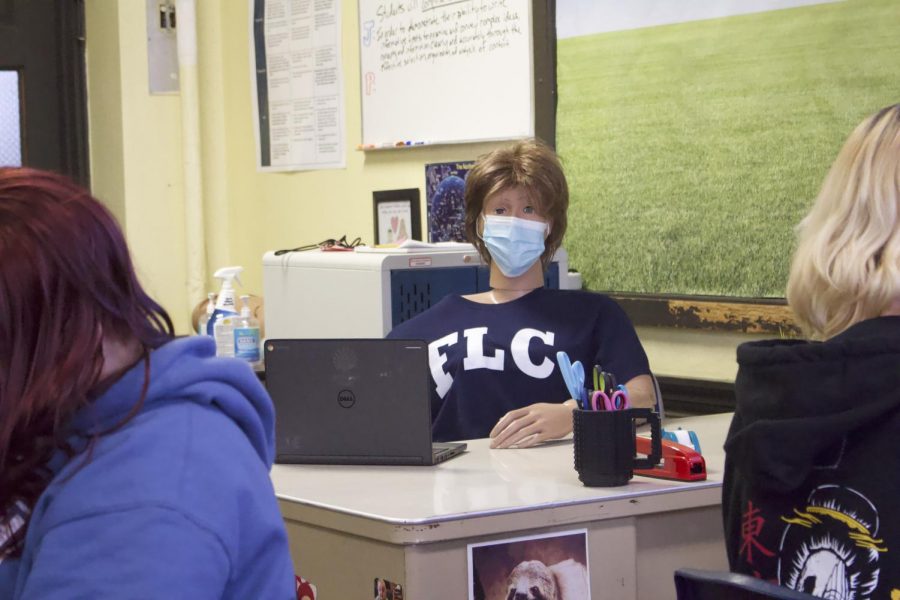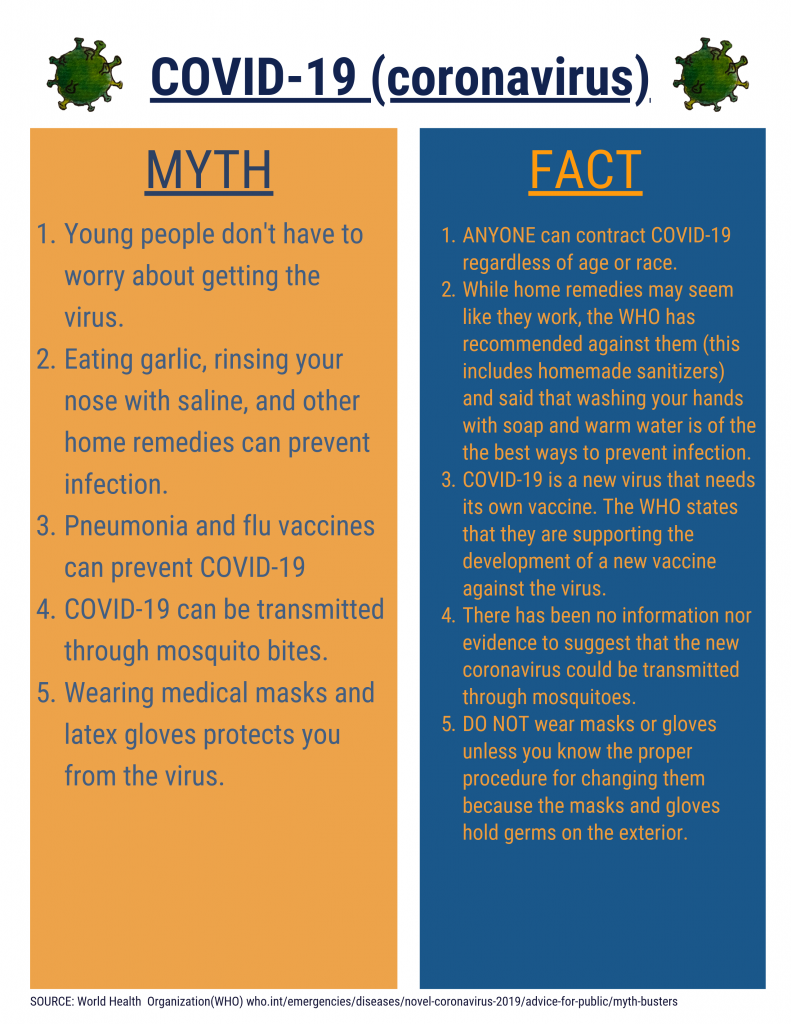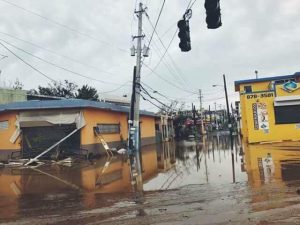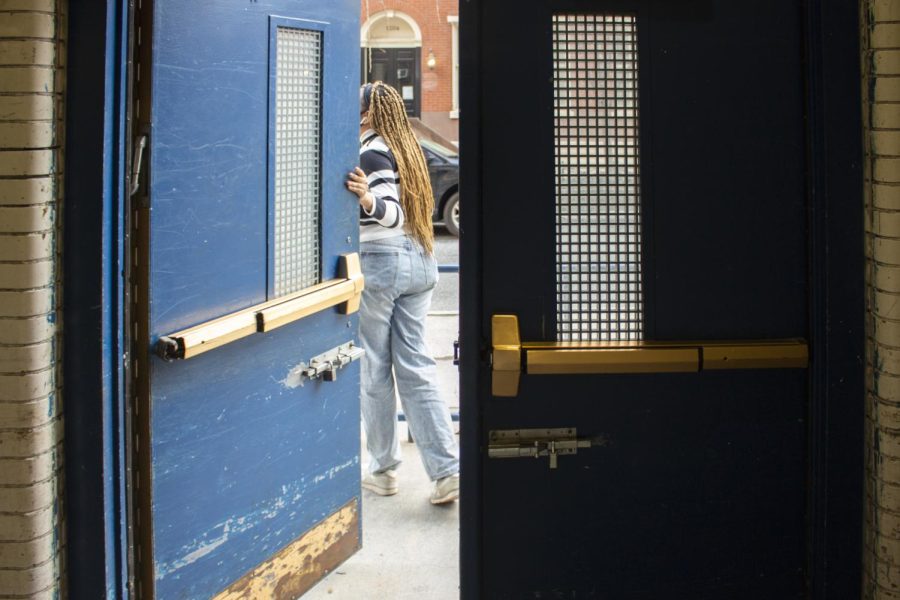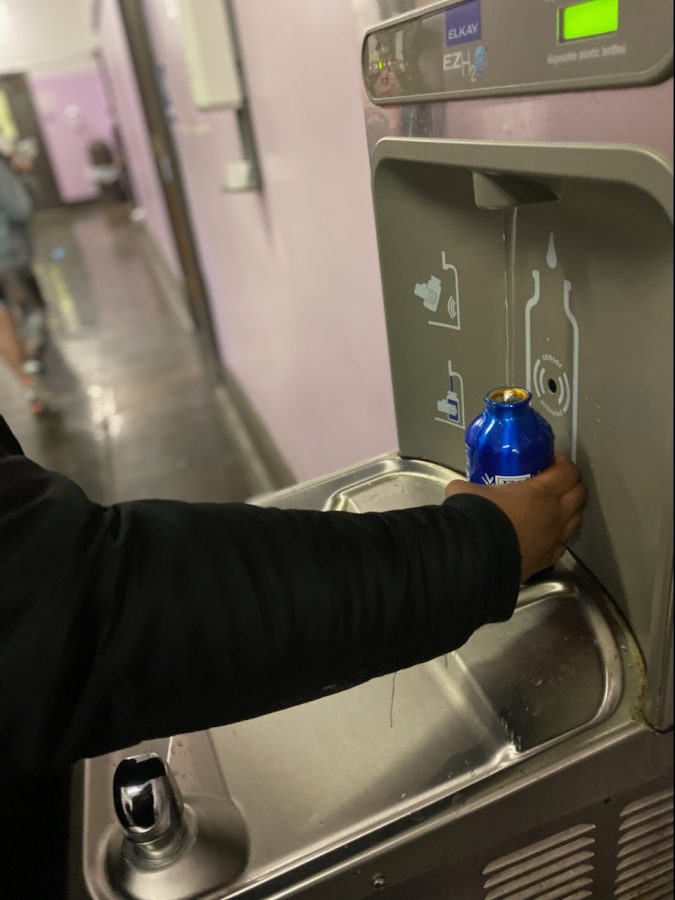Lead In PSD Water
Franklin Learning Center. Student using new FLC waterbottle
April 7, 2022
In 2018, the School District of Philadelphia began a test to find all water outlets that contain considerable amounts of lead in schools. It made major news headlines and people seemed quite concerned. As time passed, public concern lessened. The topic has stretched on for about 4 years now. But what does lead poisoning even look like? Has the issue changed in the past few years?
Lead is a toxin that was commonly found in architecture in the 19th and 20th centuries. Lead’s toxicity has been known since Ancient Greece, but it kept being used because of how easy it was to convert. Lead could be converted into many different forms including glass, paint, plumbing, etc. People began passing acts to ban lead in products in the late 1900s, but its footprint remains in many high schools in the Philadelphia School District, including Franklin Learning Center High School.
According to a new report, only 29% of public schools in the School District of Philadelphia have been tested for lead in their water. Of that 29%, lead had been detected in about 98% of them. They’re detecting parts per billion(ppb) of lead, yet minute levels of lead can have harmful consequences as well. There is no safe amount of lead that can be consumed. If the water fountains fail the test by exceeding a certain amount (10ppb), they’ll be shut down until lead levels go down. Note that 71% of public schools haven’t finished or haven’t started their tests yet, and many of the schools who have, haven’t released all of their results into the public domain. Leaving the public with not much information to go off of.
Though lead poisoning is rare, lead can cause significant damage if around for long periods of time. Lead isn’t just in plumbing; it’s in the paint as well. Paint that has still yet to be removed in many schools in the Philadelphia School District. Symptoms of lead poisoning can manifest in a developmental gap, difficulty comprehending topics, irritability, hearing loss, seizures, and a range of many other things. People could have lead poisoning without any symptoms which can cause it to go untreated until it’s too late.
As stated previously, the lead problem in the school district has lasted for about 4 years now, yet substantial change has yet to be made since less than ⅓ of schools have been tested. In 2019 The Flash Editorial Board wrote an opinion piece on this topic a few years ago labeled “Education First, Safety Second: The Cost of Going to School at FLC”. It goes into greater detail on lead in the water fountains in FLC in particular, and also the school’s conditions. They mention in their article that in 2018 “PennEnvironment Research graded the state of Pennsylvania with an “F” for lacking required testing.”
The School District issue only reflects a broader, more widespread problem. High levels of lead can be found in homes, but home sinks have filters that protect families. Fortunately, schools have begun replacing water fountains with water stations that have filters and have begun giving out water bottles yearly. This doesn’t change the lead plumbing problem, but it does ease it slightly.
In short, lead has been a problem for the School District of Philadelphia for a long period of time and some measures are being taken to console the problem yet it seems to be going slower than expected.







![[VIDEO] FLC 10th grade student awarded $40,000 in a BigFuture Scholarship](https://theflashflc.org/wp-content/uploads/2023/05/Screen-Shot-2023-05-02-at-4.39.10-PM-900x493.png)
![[VIDEO] Mayoral candidates campaign on student issues](https://theflashflc.org/wp-content/uploads/2023/04/IMG_1387-900x506.jpg)


